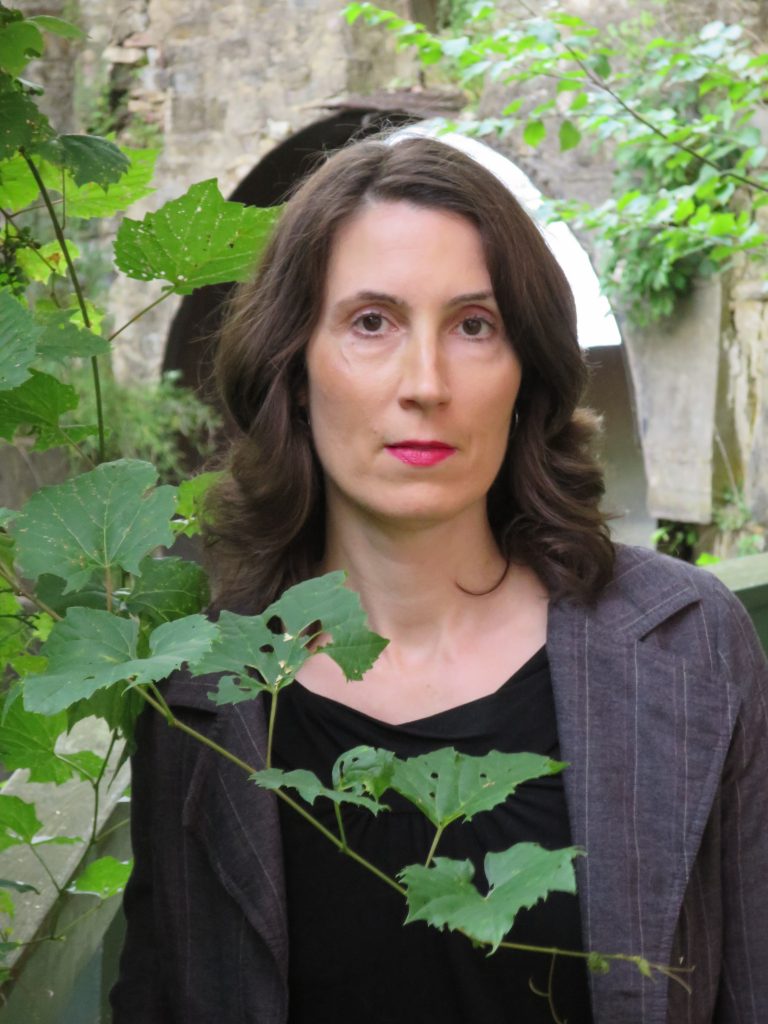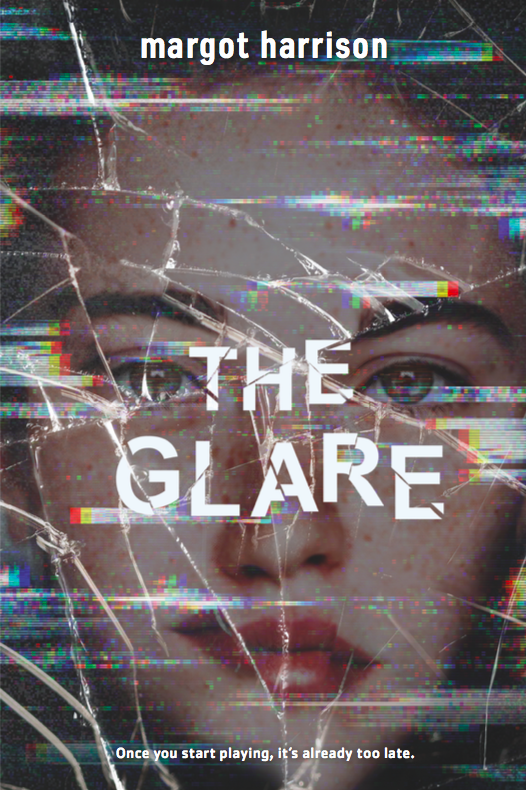If you’ve been following me on the social, you know I love interviewing authors (check out the list of past interviews I’ve conducted – in the end of this post), so after transitioning into this new website format from my old, dusty Google Blogger, here I’m again.
Today I’m very excited to be interviewing Margot Harrison, who is an award-winning journalist living in Vermont. She is also the author of The Killer in Me. Find her on Instagram and Twitter at @MargotFHarrison.

Our e-paths with Margot have crossed this September during Young Adult Scavenger Hunt (sadly, this YASH was the last one ever), when Margot hosted me on her site (check out this soundtrack/playlist for my latest novel Oasis!). Margot’s latest book THE GLARE sounded so much like my cup of tea and I immediately got myself a copy. Around then I’ve just finished watching the new series UPLOAD, so I was desperately craving more of that creepy spec/tech feel. And wow, THE GLARE did not disappoint – so scary and intense. Loved it.
On to the interview! (You can find handy links to buy THE GLARE in the end of the post)
Katya: Who is Margot Harrison? Tell us something about yourself and how you became a writer.
Margot: When I was young, my parents moved to a rural farmstead where we were very isolated. We had no TV, this was pre-internet times, and in the winter, we often couldn’t even get down the hill to my school bus stop. So books became my lifeline. I started writing very early and never stopped. I got a PhD in literature, taught at the college level, and wrote and edited for a weekly newspaper (where I still work), but it took me a long time to write any publishable fiction. From my very first agent search to my first book sale was nearly 10 years.
K: You’re being published with Little, Brown – what was your path to publication like?
M: Right before my debut novel, The Killer in Me, was released by Disney Hyperion, I sold The Glare to my editor on proposal. I submitted about 75 pages and an outline. What followed were years of edits during which the book changed immensely, and very little that was in that original proposal ended up in the final book. Telling a scary story about online culture turned out to be a lot harder than I anticipated, and I hope the book is better as a result of all that work. Five months before publication, Disney sold about 1,000 front- and backlist titles to Hachette, so both my books became Little, Brown books. That was a little scary at first, but the LBYR team was incredibly welcoming. My experience with them has been great.
K: We authors tend to be heavily involved in marketing to promote our own work. What kind of publicity have you been doing for your second novel and what have you found the most effective in that regard? Was your marketing for the second book vastly different compared to your debut? (***Releasing a book in the middle of a global pandemic is a rather different experience from a ‘normal’ release, so take this question with a grain a salt:)
M: For my first book, I did a lot of publicity with my wonderful debut group, the Sweet Sixteens. I also went to the ABA Children’s Institute and the Boston Book Festival. This time around, I decided not to stress about things too much, given the inherent challenges of promoting during a pandemic. I’ve become more active on Instagram, and it’s where I feel most comfortable talking about books, so I emphasized that. I pitched my book to Bookstagrammers, did giveaways, and bought a Storygram Tour. My LBYR publicist was excellent; she pitched me for a panel at Comic-Con at Home, which I ended up doing, so that was something good that came out of all the events going virtual.

K: What kind of research did you do for The Glare, and what was the most unexpected or interesting thing you’ve learnt while researching/writing this book?
M: I did a lot of research on how apps and games are designed to, essentially, addict their users. The book emerged from my personal experience that social media use is linked to compulsion and anxiety—that’s why they call it “doomscrolling”! But this research showed me in concrete ways how apps reward us for staying engaged—always on an unpredictable schedule, so we have a hard time disengaging for fear we might miss something. (Think slot machines in your pocket.) I also studied brain-computer interfaces, which are fascinating and scary and increasingly a real thing. A brain implant can “read” what you are seeing and reproduce it on a computer screen!
On some level, I think, we are all already connected to computers and becoming cyber-people. (I find it very hard to leave home without my phone!) In The Glare, Hedda’s mom knows this and tries to “save” her daughter by keeping her away from all electronic devices. But that’s not the answer, at least in my view, because a kid who is disconnected will also be isolated. There has to be a healthier way to relate to our many screens.
K: What kind of books (or stories in any format) were the most formative for you during your childhood and adolescence?
M: Fantasy and science fiction were huge for me as a kid. I loved The Chronicles of Narnia, Ursula K. LeGuin’s Earthsea Trilogy, and the criminally under-read novels of Diana Wynne Jones. I was always hoping a portal would open so I could get out of my life and go somewhere else. When I was 15, I wrote a 100-page Star Wars prequel fanfiction on a manual typewriter, submitted it to an official contest, and never heard back, because that’s the kind of thing we did before the Internet.
As a teen, I got very into classic lit: the Brontës, Austen, Dostoyevsky, Wordsworth and Coleridge. I told myself I was very mature, but whenever I went to a library I would sneak into the YA section. I started reading YA at about age eight with the then-scandalous works of Judy Blume and never stopped.
K: What next? What are you working on, dreaming about, etc.?
M: I’ve been dreaming about book titles recently! Who knows why. My brain likes to imagine bizarrely titled books I’ll never write. I’m addicted to podcasts about bad or pulpy books, like “Teen Creeps,” “I Don’t Even Own a Television” and “The Worst Bestsellers.” They are hilarious and relax me after reading the news gets me all stressed out.
I’m working on an adult novel with a slightly speculative twist, and I have a couple of YA novels on the drawing board that I’d love to write. I hope to announce some news soon, so stay tuned!
K: I love the end each interview with a little bonus rapid-fire round, so here goes:
Your dream holiday?
A writing retreat at Ghost Ranch in New Mexico.
Favorite writing snack?
Popcorn with nutritional yeast.
In your writing process/routine, are you… a planner, pantser, or…?
Current planner, reformed pantser. But I always write the first 20 or 30 pages with no plan before I decide to commit to a project.
Do you listen to music when you write? (If yes, what’s been on your play-list lately?)
I can’t — it unfocuses me, unfortunately.
Cats or dogs?
Love both, but I’ve had just cats for a while. They’re the best writing companions.
Coffee or tea?
Depends on my current stress levels. These days I’m drinking black semi-caf coffee with maple syrup because it’s perfect for winter.
Buy links for the Glare:
Margot’s local store: https://www.phoenixbooks.biz/glare-margot-harrison
Bookshop: https://bookshop.org/books/the-glare-9781368005654/9781368005654
IndieBound: https://www.indiebound.org/book/9781368005654
Check out previous author interviews I’ve conducted over the years: